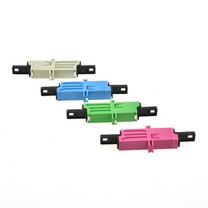In network wiring, optical cables are usually used outdoors (connections between buildings), and optical fibers or network cables are used inside indoor buildings. What equipment is used? What is their function?
Connection
Step 1: The outdoor optical fiber cable is connected to the terminal box. The purpose is to splice the optical fiber in the optical cable with the pigtail, and lead it out through the jumper.
Step 2: Connect the optical fiber jumper to the optical fiber transceiver, the purpose is to convert the optical signal into an electrical signal.
Step 3: The optical fiber transceiver leads to electrical signals, and the transmission medium used is twisted pair. At this time, the twisted pair can be connected to the RJ-45 port of the network device. So far, the photoelectric signal conversion is completed.
Note: Many network devices now have optical ports (optical fiber interfaces), but if there is no optical distribution module (similar to optical fiber transceiver functions), this port cannot be used.
Function and connection method of optical cable terminal box and pigtail
The function of the optical cable terminal box: terminate the optical cable, connect the core and pigtail in the optical cable
For example: a 4-core fiber optic cable (there are 4 fiber cores in the fiber optic cable), then the fiber optic cable will pass through the terminal box, and 4 more pigtails can be spliced, that is, 4 jumpers will be led out. As shown in the figure, this is a 12-core single-mode bundle pigtail.
Pigtail: one end has a connector, and the other end is a broken end of an optical fiber core. Through fusion splicing, it is connected with other optical cable cores.
Pigtail function: mainly used to connect the connectors at both ends of the optical fiber. One end of the pigtail is fusion spliced with an optical fiber connector, and the other end is connected to an optical fiber transceiver or an optical fiber module through a special connector to form an optical data transmission path.






